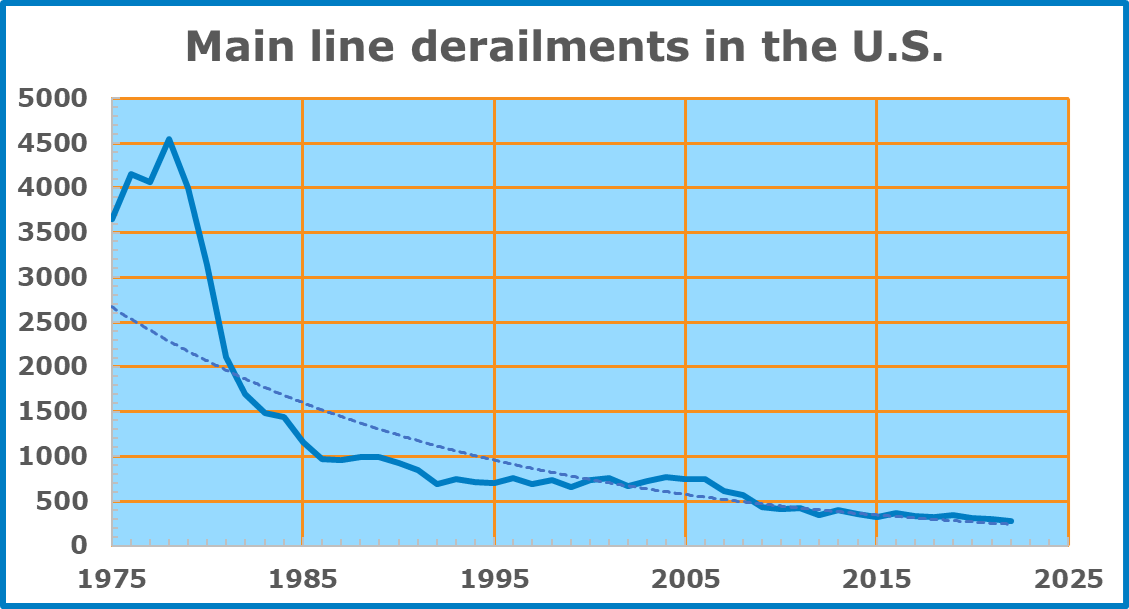“Banking should be boring.” — Senator Elizabeth Warren
We tend to celebrate those adventurers who take big risks for the chance at big rewards, at least when it pays off. On the other hand, we tend to condemn those that take big risks but don’t suffer the consequences when their risk-taking doesn’t pay off. Especially when it’s the rest of us that suffer the consequences.
One of the purposes of regulations is to squash the temptation to take big risks for the chance at big rewards when it’s the rest of us that will have to suffer the consequences and pick up the pieces when things go badly. After several recent bank failures, for instance, when the FDIC had to intervene to salvage deposits, we were all reminded that banking should be boring. We don’t want to see bankers move right up to the edge of the cliff.
We don’t want to see railroads or chemical operations do that either. The better any industry gets at doing something, the closer to the edge they want to get and the further from the edge we expect for them to stay. As a society, we’ll regulate them to make sure they don’t get to close to the edge.
Train Derailments
In the weeks following the Norfolk Southern derailment in East Palestine, Ohio, several other derailments made the national news. They include a BSNF derailment in Washington State that spilled 5,000 gallons of diesel, a BSNF derailment in Arizona of a train carrying corn syrup, another NS derailment in Ohio, an NS derailment in Michigan of a train that included one car carrying hazardous materials, and an NS derailment in Alabama that included two cars that previously contained hazardous materials. Given the flurry of press attention, it would be easy to conclude that we are in the midst of an epidemic of train derailments. In an effort to put this in context, some media outlets have pointed out that there are about 3 derailments per day.

Photo credit: National Transportation Safety Board https://www.ntsb.gov/investigations/Pages/RRD19FR007.aspx
Even that, however, sensationalizes what is happening. “Three per day” is based on the Federal Railroad Administration (FRA) report on a total of 1,164 derailments in 2022. That number, however, includes derailments in rail yards, on sidings, and on the tracks within industrial facilities. It is the derailments on the main lines, like those running through East Palestine, near Anacortes, Washington, near Topock, Arizona, near Springfield, Ohio, in Van Buren Township, Michigan, and in Calhoun County, Alabama, that give us dramatic photographs and breathless reports. In 2022, the FRA reports that there were 280 derailments on main lines. That’s less than one per day, but is still a surprisingly high number to many.
What should be a bigger surprise is the number of derailments that occurred in the past. FRA shares data all the way back to 1975.

In the late 1970’s, there were typically 10 ~ 12 main line derailments per day. I don’t recall train derailments being national news very often at the time. That’s the thing about news. If it happens all the time, it’s not news. We’re now entering an era where we can expect train derailments to be national news.
Catastrophic Releases in the Chemical Process Industries
In March 2020, the Chemical Safety Board put a rule into effect that required companies that experienced a catastrophic release at their facility to report it. The CSB defines a catastrophic release as one the results in one or more fatalities, one or more in-patient hospitalizations, or property damage in excess of $1,000,000. This is the same kind of requirement that the FRA has imposed on railroads for decades. Before that, the incidents that captured our attention were those that made national news.
Now, we can get a better handle on where we are and how far we have to go. In the last 9 months of 2020, industry reported 38 incidents, 7 with fatalities. During 2021, industry reported 83 incidents, 17 with fatalities. And during 2022, industry reported 103 incidents, 7 with fatalities. With less than three years of data, it’s premature to draw conclusions about where we are and where we are going. Are we getting worse or just getting better at reporting. We cannot know what to expect.
This is what we can expect, though. Events that give us dramatic images – photos of fire sell – will make the news. Events that result in fatalities or angry communities will make the news. Reporters will turn to the CSB database and then draw overly broad conclusions to add flavor to their reporting.
We will keep working to drive down the number and severity of incidents. That doesn’t mean that the press will spare us when incidents occur. The less often incidents occur, the more newsworthy each incident will become, the more likely it will be to prompt political posturing and societal angst.
Banking
As Senator Warren observed, banking should be boring. People who want to speculate have other avenues for their risk-taking. The purpose of banking regulations is to make sure that the rest of us are not left to pick up the pieces – whether in lost deposits or with taxpayer-funded bailouts – when a reckless banker’s bets don’t pay out. When bankers believe that greater risk has nothing but upside, they make foolish decisions. Admittedly, they only look foolish in hindsight, so the point of regulations is to identify and prevent those foolish decisions before they are ever made.
The same holds for other industries where failure has horrible consequences and the cost of failure is born by us all. We need regulations that prevent these industries from flirting with the edge of the cliff. Every industry with those kind of regulations—the kind that set up barriers between where they are allowed to operate and the edge of the cliff—resents those barriers and pushes back against them, arguing that they understand the hazards and have it all under control.
Let them push. Like teenagers pushing for a later curfew, that’s what they do. In the meantime, we need those barriers up, not for the majority of the time when nothing happens when those industries flirt with the edge, but for those times when they flirt with the edge and take us over with them.
